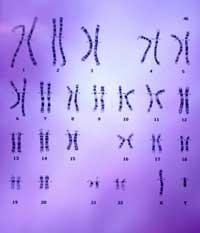Again sequenced the entire human genome?

At least twice it has been heard that they have a complete sequence of the human genome. For the first time in 2000, they sequenced people's genetic code, but above, a work that apparently contained errors and gaps. Thus, the Human Genome Project began to solve these errors and in 2003 they announced a more detailed sequence.
This announcement did not mean the end of the work. In fact, by then they were already involved in a much deeper work: the chromosome genome was sequencing the chromosome as accurately as possible. In this sense, it was stated that the sequences of 23 chromosomes (including X and Y sex chromosomes) had been clarified one by one. And now they have also announced that they have finished with the last remaining chromosome, chromosome 1.
The largest of chromosomes

Chromosome 1 is the largest chromosome of human cells, so they have elongated more than with other chromosomes. It accounts for 8% of the total genome and is six times larger than the smallest chromosome (chromosome 21). It is so large that it has many genes and many diseases have their origin in chromosome 1 genes.
Humans say we have between twenty-five and twenty-five thousand genes, of which 3,141 are on chromosome 1, which are a thousand new from the genetic point of view. Through all these genes, this discovery will allow a better understanding of the relationship of several diseases with chromosome 1. In fact, there are already 350 diseases related to chromosome 1. For example, the chromosome sequence has allowed locating a gene related to cleft of the lip and palate.
On the other hand, on chromosome 1, several episodes have been found that characterize individuals. These sections are especially interesting because they are related to the sensitivity of each individual towards some diseases. This chromosome also includes the parts that separate the ethnicities in human groups. For example, they have found a fat-related gene, which is different in human groups of European, African and Asian origin. Researchers have explained that this gene may have been adapted to cold in some groups.

As seen, genes provide the key to investigating the origin of diseases, evolution, and human migrations. The researchers have revealed the entire human genome and this large database is available to everyone. It is possible that in the future they will again claim that the entire human genome has been sequenced. If so, we should understand that they know the sequence more rigorously
Published in 7K.
Buletina
Bidali zure helbide elektronikoa eta jaso asteroko buletina zure sarrera-ontzian











